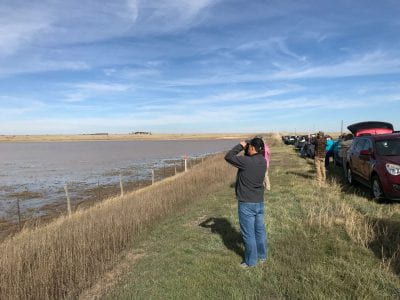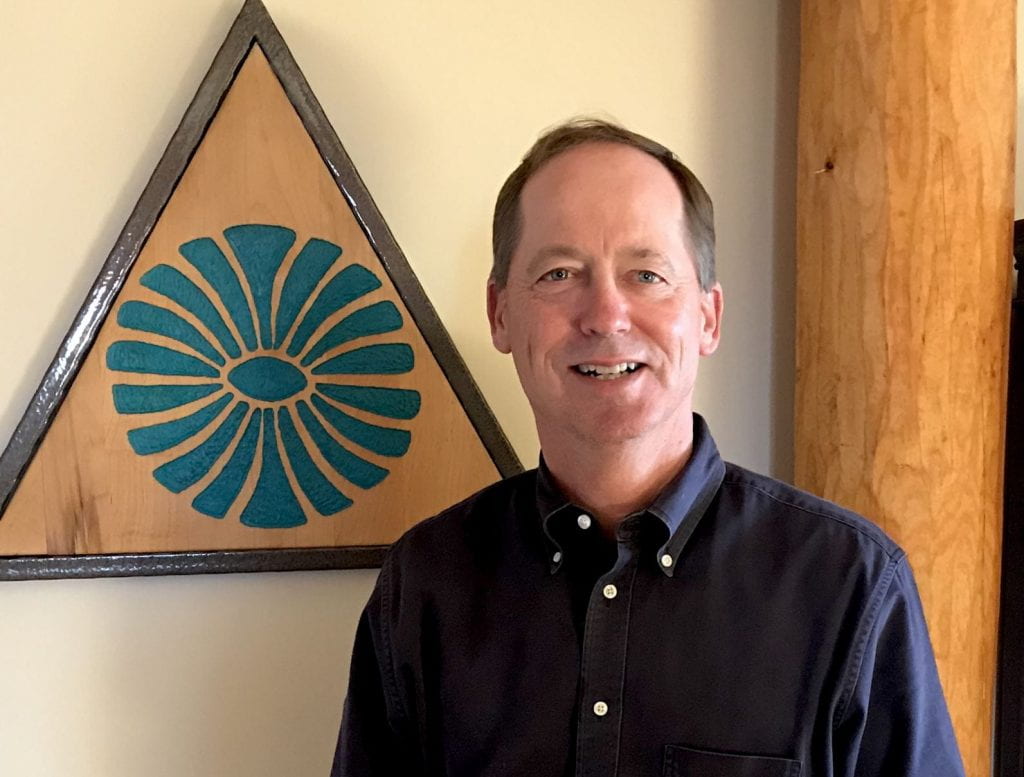In this issue’s Q&A, Texas+Water Editor-in-Chief, Dr. Todd Votteler, interviews Dr. Darryl Birkenfeld, Executive Director of Ogallala Commons.
Birkenfeld grew up on a diversified family farm in Nazareth, Texas. After completing degrees in college studies, philosophy, and religious studies, he was ordained as a Catholic priest in 1988. He worked in predominantly Spanish-speaking parishes for the next 14 years.
In 2002, Birkenfeld completed a doctorate in social ethics from the Graduate Theological Union in Berkeley, California. His dissertation is entitled “From Colonization to Holism: Reconstructing an Ethical Method for U.S. Agricultural Ethics.” Soon after, he followed a new road to Ogallala Commons, a nonprofit education and leadership organization where he has been Executive Director since 2003. Darryl and his wife, Joann Starr, live in Nazareth, Texas.
What is Ogallala Commons?
Ogallala Commons (OC) is a 501(c)3 nonprofit organization providing education and leadership to build vibrant communities in the Great Plains region. Our service area is centered over the High Plains-Ogallala Aquifer but also extends west into the Rocky Mountains foothills region and east to the river-braided prairies of the Midwest. The Ogallala Aquifer is a tremendous gift of groundwater that intertwines all human and natural communities living in this unified area of the Great Plains even though we are politically and culturally sectioned into eight states.
Our organization educates about stewarding our aquifer and building career pathways through youth engagement, entrepreneurship, and community-based internship opportunities. We also offer programs to strengthen and rebuild our local/regional food systems.
Why the Ogallala?
When you look at our maps on our website, you can see that the Ogallala Aquifer forms the backbone of OC’s service area. Our mission outreach also extends west into the Rocky Mountains foothills region and east to the river-braided prairies of the Midwest.
The Ogallala Aquifer is a tremendous gift of groundwater that intertwines all human and natural communities living in this unified area of the Great Plains even though we are politically and culturally sectioned into eight states. Our communities, both rural and urban, depend on the Ogallala for our existence. In the vision of the American explorer John Wesley Powell, the Ogallala Aquifer represents a “watershed commonwealth” that must be preserved and stewarded if we are to have economic, ecological, and social sustainability across the 176,000 square miles that overlie this freshwater aquifer.
What are the key challenges that you see across the Ogallala region and what are solutions that OC is encouraging?
Simply put, in so many areas of the region, we are withdrawing far more water than we are recharging — thus we are depleting the Ogallala Aquifer to such an extent that irrigated agriculture cannot continue. In addition, we are losing miles of stream and river flows that we once had, due to depletion of the aquifer. Aquifer depletion also contributes to youth outmigration and social decline in our communities, in the sense that it influences the vision of youth, their parents, and young adults — creating a shadow that makes it difficult to see possibilities for a future.
How do you reach and work with landowners?

Each year, OC organizes and conducts four Playa Field Days and three Stewarding Our Aquifer Field Days across the South Plains and Texas Panhandle. In 2021, these field days were attended by more than 180 people: 75 landowners as well as numerous Master Naturalists, agency personnel, and the interested public.
We collaborate with partners that have a large landowner footprint, such as the Texas Alliance for Water Conservation. We feature presenters who provide important information on Ogallala Aquifer depletion, programs for playa restoration (and for increasing aquifer recharge), and management practices to assist in the transition from irrigated to rainfed agriculture.
Water and soil availability are critical elements for agriculture across the West. What is OC doing to ensuring that resources are available in perpetuity?
In addition to our field days, OC also conducts more than 10 Playa Festivals and Water Festivals in Texas Panhandle-South Plains schools, mostly for fifth and sixth grade students. The outdoor education events enable students to learn about the water cycle and soil and mineral cycle — and how they work — in their own backyards. With so few students living on farms or having parents that work directly in agriculture, students may know more about the Amazon River Basin or the Rocky Mountains than they do about the High Plains and the Ogallala Aquifer. We have found students to be keenly interested in water and soil if they are given a chance to learn about it, walk on a playa basin, and see macroinvertebrates and amphibians. OC began our first Playa Festival in 2003, and since that time, we have impacted at least 10,000 students, their parents, and their school teachers through these education events.
May is American Wetlands month. One of OC’s priorities is the conservation and restoration of playa lakes. Why are playa lakes valuable and what is OC doing to conserve and restore playa lakes?
OC held its first Playa Field Day in 2010, and we have been adamant about and committed to increasing community knowledge about playa ecosystems. As we tell elementary students, in the High Plains, we don’t have mountains; we only have the headwaters of rivers — but we have the most playas in all the world!
Though playas only cover 2% of the total landscape of the Southern High Plains, they provide essential ecological services, such as natural flood control in increasingly erratic heavy rainfall events. In addition, playas are prime habitat for native flora and fauna of the region and one of the most important habitats for migratory waterfowl and shorebirds through the Central Flyway of North America. Playas are also seedbeds for as many as 350 plants, and though only a dozen or so plant types tend to dominate in any given year depending on the weather, there will be a different regime of plants in the following year. In so many ways, playas are the ultimate adapters to all types of weather extremes that occur on the Southern High Plains, and they are some of the most dynamic wetlands in the world. Finally, playas in the Texas High Plains are also the primary source of recharge for the rapidly depleting Ogallala Aquifer. More than 70% of playas have been adversely altered through tillage, pitting, sedimentation, road building, and contamination (see Loren Smith, Playas of the Great Plains, 160-176).
At OC’s Playa Field Days, we partner with the Texas Playa Conservation Initiative to educate and equip landowners, rural municipalities, and the interested public—not only to conserve playa ecosystems, but also to restore playas that are pitted or need the establishment of a grass buffer to protect them from sediment erosion. We also take field excursions to look at recently restored playa basins and work on disseminating information on programs and practices to assist interested landowners or municipalities in restoring playas to improved functionality that will result in better habitat as well as improved aquifer recharge.
Join Our Mailing List
Subscribe to Texas+Water and stay updated on the spectrum of Texas water issues including science, policy, and law.



